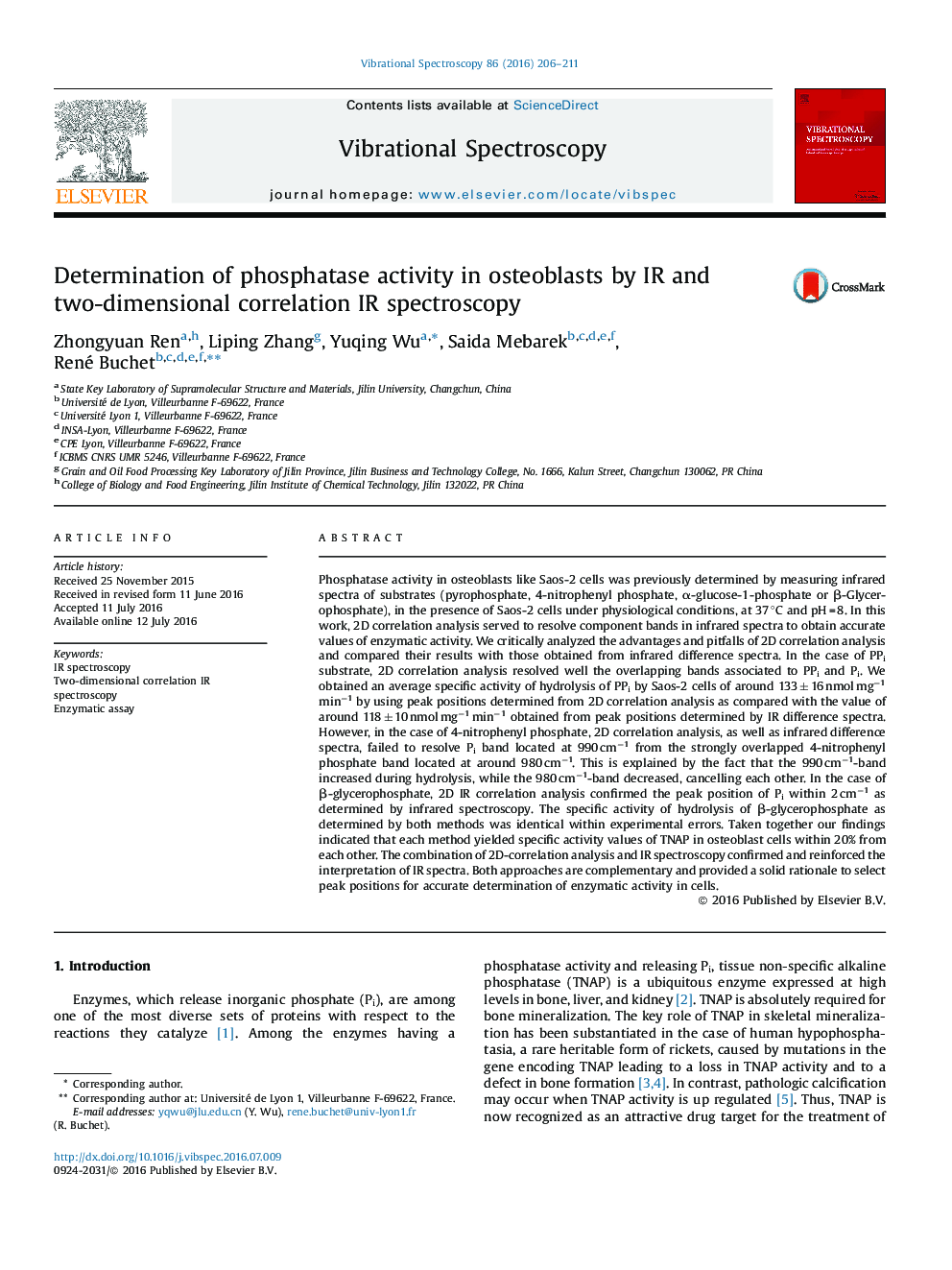| Article ID | Journal | Published Year | Pages | File Type |
|---|---|---|---|---|
| 1249521 | Vibrational Spectroscopy | 2016 | 6 Pages |
Phosphatase activity in osteoblasts like Saos-2 cells was previously determined by measuring infrared spectra of substrates (pyrophosphate, 4-nitrophenyl phosphate, α-glucose-1-phosphate or β-Glycerophosphate), in the presence of Saos-2 cells under physiological conditions, at 37 °C and pH = 8. In this work, 2D correlation analysis served to resolve component bands in infrared spectra to obtain accurate values of enzymatic activity. We critically analyzed the advantages and pitfalls of 2D correlation analysis and compared their results with those obtained from infrared difference spectra. In the case of PPi substrate, 2D correlation analysis resolved well the overlapping bands associated to PPi and Pi. We obtained an average specific activity of hydrolysis of PPi by Saos-2 cells of around 133 ± 16 nmol mg−1 min−1 by using peak positions determined from 2D correlation analysis as compared with the value of around 118 ± 10 nmol mg−1 min−1 obtained from peak positions determined by IR difference spectra. However, in the case of 4-nitrophenyl phosphate, 2D correlation analysis, as well as infrared difference spectra, failed to resolve Pi band located at 990 cm−1 from the strongly overlapped 4-nitrophenyl phosphate band located at around 980 cm−1. This is explained by the fact that the 990 cm−1-band increased during hydrolysis, while the 980 cm−1-band decreased, cancelling each other. In the case of β-glycerophosphate, 2D IR correlation analysis confirmed the peak position of Pi within 2 cm−1 as determined by infrared spectroscopy. The specific activity of hydrolysis of β-glycerophosphate as determined by both methods was identical within experimental errors. Taken together our findings indicated that each method yielded specific activity values of TNAP in osteoblast cells within 20% from each other. The combination of 2D-correlation analysis and IR spectroscopy confirmed and reinforced the interpretation of IR spectra. Both approaches are complementary and provided a solid rationale to select peak positions for accurate determination of enzymatic activity in cells.
